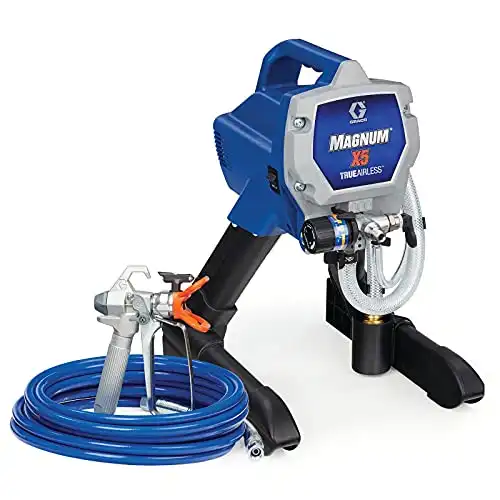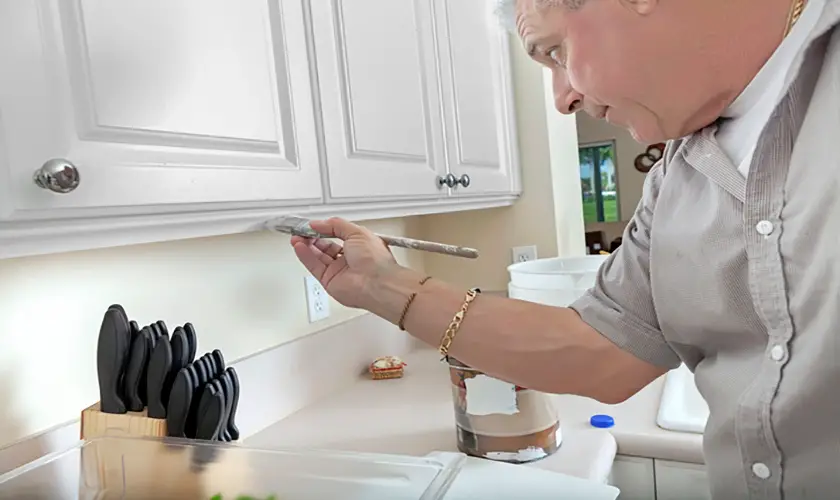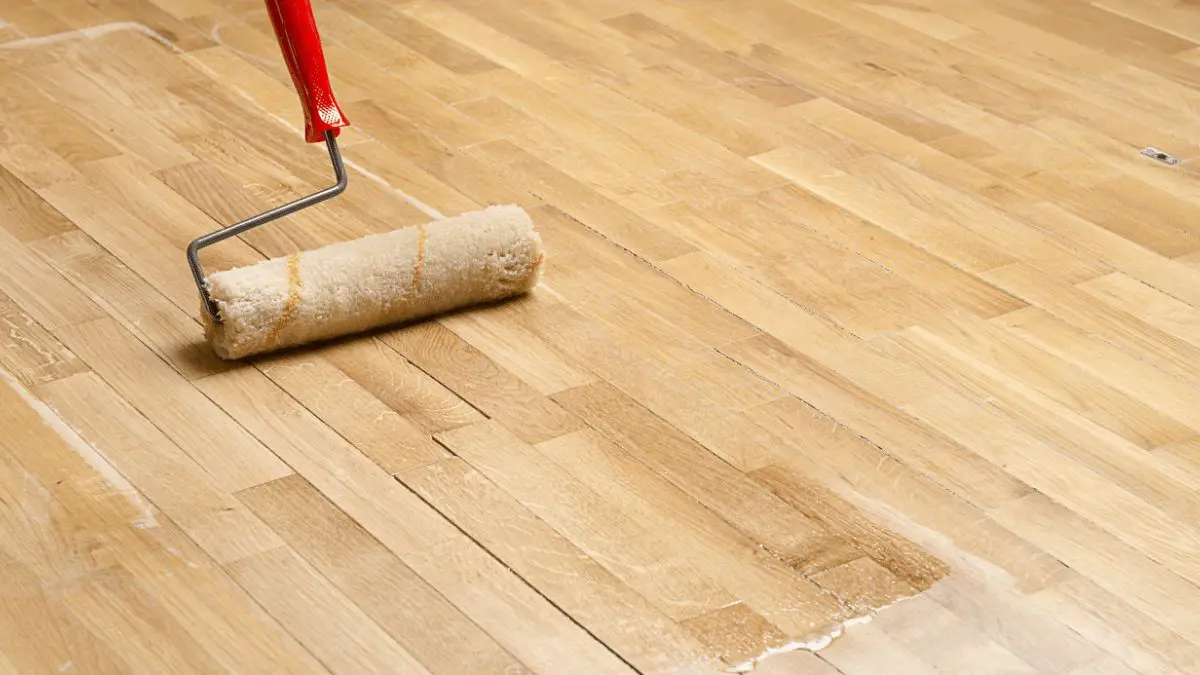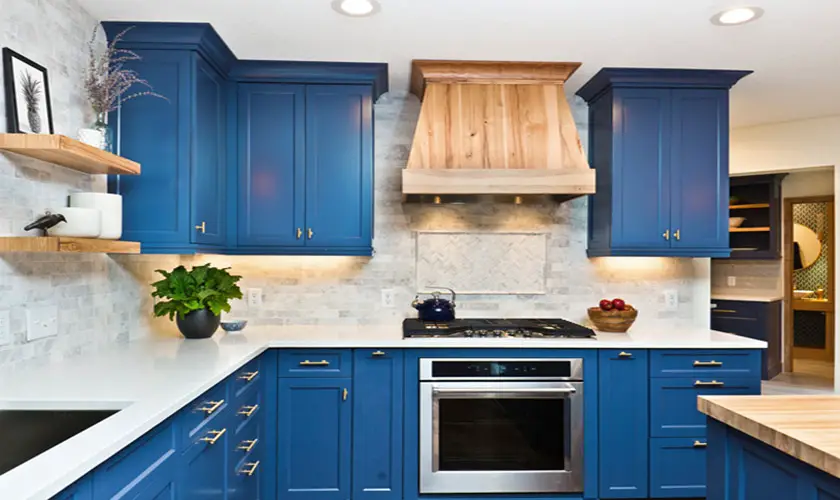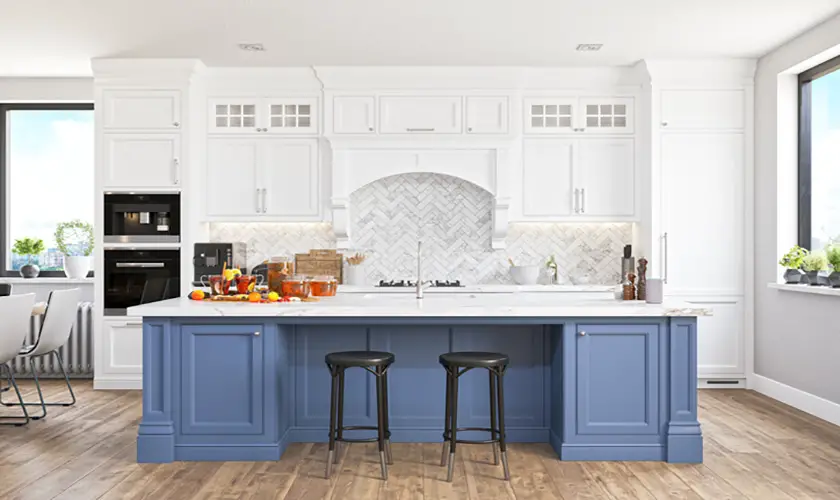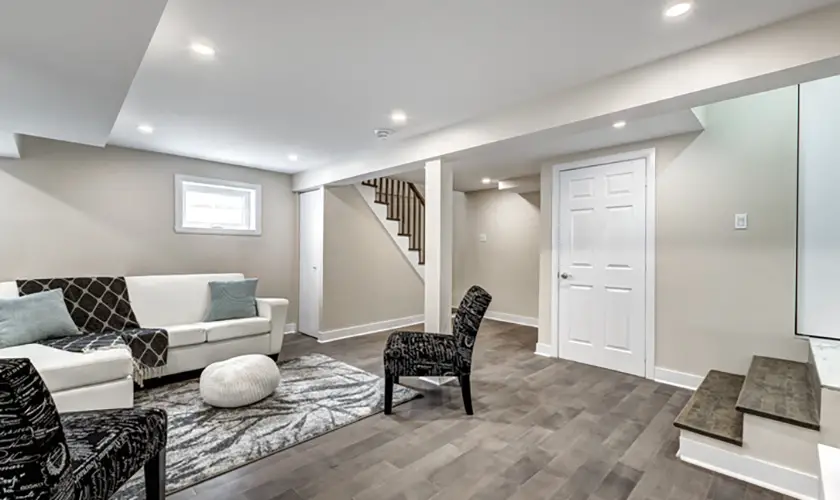When painting your home, you may wonder what the difference is between exterior vs interior paint. Exterior paint withstands the weather, while interior paint is more about appearance. The main difference is the paint formula, as each paint serves different purposes.
When visiting your local paint store, consider the different paint types. The major differences are the resins and compounds inside the paint.
What’s the Difference Between Exterior and Interior Paint?
Exterior paint contains more pigments and solvents than interior paints, which gives them better coverage and durability. On the other hand, interior paint often has a higher latex content, making it more flexible and less likely to crack or peel over time.
Consider using a house painting cost estimator to ensure you’re not overpaying for a professional painting contractor or if you need an estimate of how much paint to purchase.
Exterior Paint Formula
Exterior latex paint must withstand more wear and tear than interior paint. Outdoor paint contains more pigment and solvents than interior paint, which gives them better coverage and durability to UV exposure from direct sunlight and rain. Because they typically have higher pigment levels, they can cover more areas with fewer coats.
The main ingredients in outdoor paint are acrylic resins, which provide added flexibility and protection from the elements. Other components may include solvents, fillers, additives, mildewcides, and UV blockers.
Exterior paints usually have a strong odor as they often contain higher VOC levels. These organic pigments are low or not present in interior paint. They present health hazards, making them not suitable on interior surfaces.
It is best suited for:
- exterior siding
- brick masonry
- exterior wood surfaces like decks, railings, etc
- any exterior surface that is susceptible to weather or moisture

Interior Paint Formula
Interior paints are water-based paints that often have a higher latex content. They have more flexible resin and are less likely to crack or peel over time. Interior paints are primarily to enhance the look of a room.
They contain a higher percentage of latex than exterior paint colors, making them more flexible and less likely to crack or peel over time. Indoor paint often has mildewcides which help keep mold and mildew at bay. Other components may include solvents, fillers, and additives.
Exterior vs Interior Paint Finishes
In terms of color and finish, exterior paints come in a variety of sheens, from flat to glossy, allowing you to choose the look you want for your home’s exterior. Indoor paint also comes in different sheens but is usually more limited than what is available for exterior paint.
Is Exterior Paint Thicker Than Interior Paint?
Exterior paint is typically thicker than interior paint, which helps it to stand up to the elements. Exterior paints are also highly resistant to fading and discoloration due to sun exposure, whereas interior color may fade or become yellow over time.
Factors to Consider When Choosing Exterior vs Interior Paint
Choosing the right type of paint for your project can be tricky, but by considering what finish you want and what environment you’ll be painting in, you can make the best decision for your home.
When choosing between exterior and interior paint, there are several factors to consider.
Surface You’re Painting
It would be best to determine what finish you want for the surface you’re painting. For exterior surfaces, you’ll likely want a higher sheen that can withstand weathering better than flat or semi-gloss finishes. Indoors, you may want to choose a finish that fits the room’s decor.
Material You’re Painting
You should also consider what type of material you’re painting. Exterior paints are better suited for wood surfaces because it provides better protection against the elements. Interior paint works best on interior surfaces like drywall, as they’re less likely to crack or peel due to the higher latex content.
Outdoor vs Indoor Painting
It would be best if you considered what environment you’d paint in. Exterior paints are typically designed for outdoor applications, while interior paint is best for indoor use.
Exterior paints contain mildewcides that help protect against surface mold and mildew, so if you’re painting outdoors, it offers protection from wood rot due to mold and moisture.
Consider weather conditions when painting the exterior of your home. You’ll want to avoid painting exterior surfaces if inclement weather is imminent. You’ll need temperatures above 55 degrees and clear conditions for the best results.
Weather conditions don’t affect interior painting providing the interior room temperature is warm and humidity is normal.

How to Choose the Right Paint Type for Your Painting Project
Choosing the right type of paint for your project can be tricky, but several factors will help you make the best decision.
The first thing to consider is what type of finish you want for the surface you’re painting. For outdoor jobs, it’s best to use exterior paint, as it provides better protection against the elements and has a higher sheen that stands up to weathering. Indoors, you may want to choose a finish that fits the room’s decor, such as flat or semi-gloss.
You should also think about what type of material you’re painting. For example, exterior paints are better suited for wood surfaces than interior paints. On the other hand, interior paint typically works best on drywall.
Finally, consider the painting environment. If you’re working outdoors in an area prone to moisture, some exterior paints contain mildewcides that help protect against mold and mildew.
By considering what finish you want, what type of material you’re painting, and what environment you will use the paint in, you can make the best decision for your home.
Exterior vs Interior Paint Application Tips
No matter what type of paint you use, some essential painting tips apply to both exterior and interior projects.
- Make sure the surface is clean and debris-free before painting. The paint adheres better and provides a smoother finish. We recommend pressure washing a house before painting and allow to dry. Wiping interior walls with a mild deluded cleaner is also a good idea.
- Always use quality supplies, such as high-grade brushes and rollers. Using premium grade paint brushes with synthetic bristles such as the Pro-Grade 6 Pack. For paint rollers, we recommend the Bates Paint Roller Kit. Consider using a sprayer for larger painting jobs instead of for faster painting.
- Apply at least two coats of paint to ensure proper coverage. You may need additional coats of paint for dark exterior house colors to obtain an accurate, even color. If going from a darker to a lighter color, we recommend priming the surface first.
- Let each coat dry before applying the next one for the best results. Drying times may vary based on temperature and paint thickness. Different paints have different drying times. Typical drying times are 2 to 5 hours. Most paint cures within 24 hours.
How Long Will Interior Paint Last Outside?
Using interior paint outside is generally not recommended, as exterior paint is formulated explicitly for outdoor surfaces. Interior paint may not last very long due to exposure to rain and UV rays.
Interior paints typically have lower levels of mildewcides than exterior paints, making them less resistant to moisture and more likely to fade from sunlight. It’s best to use exterior paint for outdoor projects.
Can I Use Exterior Paint for Interior Projects?
While you can use exterior paint for interior projects, we don’t recommend you use exterior paint inside as it can present significant health risks. Exterior paints have a stronger odor and higher volatile organic compounds (VOCs), which can be dangerous indoors.
They typically have higher levels of mildewcides, which helps protect against mold and mildew in the wood outside. But it’s best to use interior paint if you’re doing an interior job in a humid environment.
How to Make Interior Paint into Exterior Paint?
We don’t recommend you use interior paint for exterior projects due to its lack of protection against moisture and UV rays.
However, you can make interior paint more suitable for outdoor use by adding an exterior primer or sealer before applying the paint. It will help protect the surface from weathering and improve the paint’s adhesion. Applying a clear coat of sealant over the interior paint may also be necessary to protect it from weathering fully.
You’ll save both time and money by using exterior paint for exterior painting projects.
Other Exterior vs Interior Paint FAQs
We covered a lot on exterior vs interior paint. However, you may still have some questions. Here are some frequently asked questions on exterior vs interior paint.
What will happen if I use interior paint outside?
Interior paint outside may not last long due to exposure to rain and UV rays. Interior paints have lower levels of mildewcides than exterior paints, making them less resistant to moisture and more likely to fade from sunlight.
Can I use interior paint over exterior paint?
While you can use interior paint over exterior paint, we don’t recommend it. Interior paint cannot withstand the elements like exterior paint because it does not have heavy-duty additives. Interior paint may not adhere well to existing exterior paint without sanding the surface first.
Can I Mix Interior and Exterior Paint?
We don’t recommend mixing interior and exterior paint because each chemical formula may react differently. Additionally, mixing interior and exterior paint could result in an uneven finish. Instead, it’s best to choose one type of paint for your project and stick with that.
Exterior vs Interior Paint Takeaway
There are several key differences to consider when it comes to the difference between exterior and interior paint. Exterior house paint usually contains more pigment and solvents than interior paints, making them better suited for outdoor projects due to weather exposure.
Interior paints usually have a higher latex content and come in various finishes. Some outdoor paint contains mildewcides that help protect against mold and mildew.
When choosing what paint to use for your next project, consider what finish you want, what type of material you’re painting, and the current conditions. With the proper preparation, supplies, and care, you can create a beautiful finish in any home.


